Advertisement
In 'Forms & Alterations,' Artists Use Fashion To Unravel Gender Politics And Identity
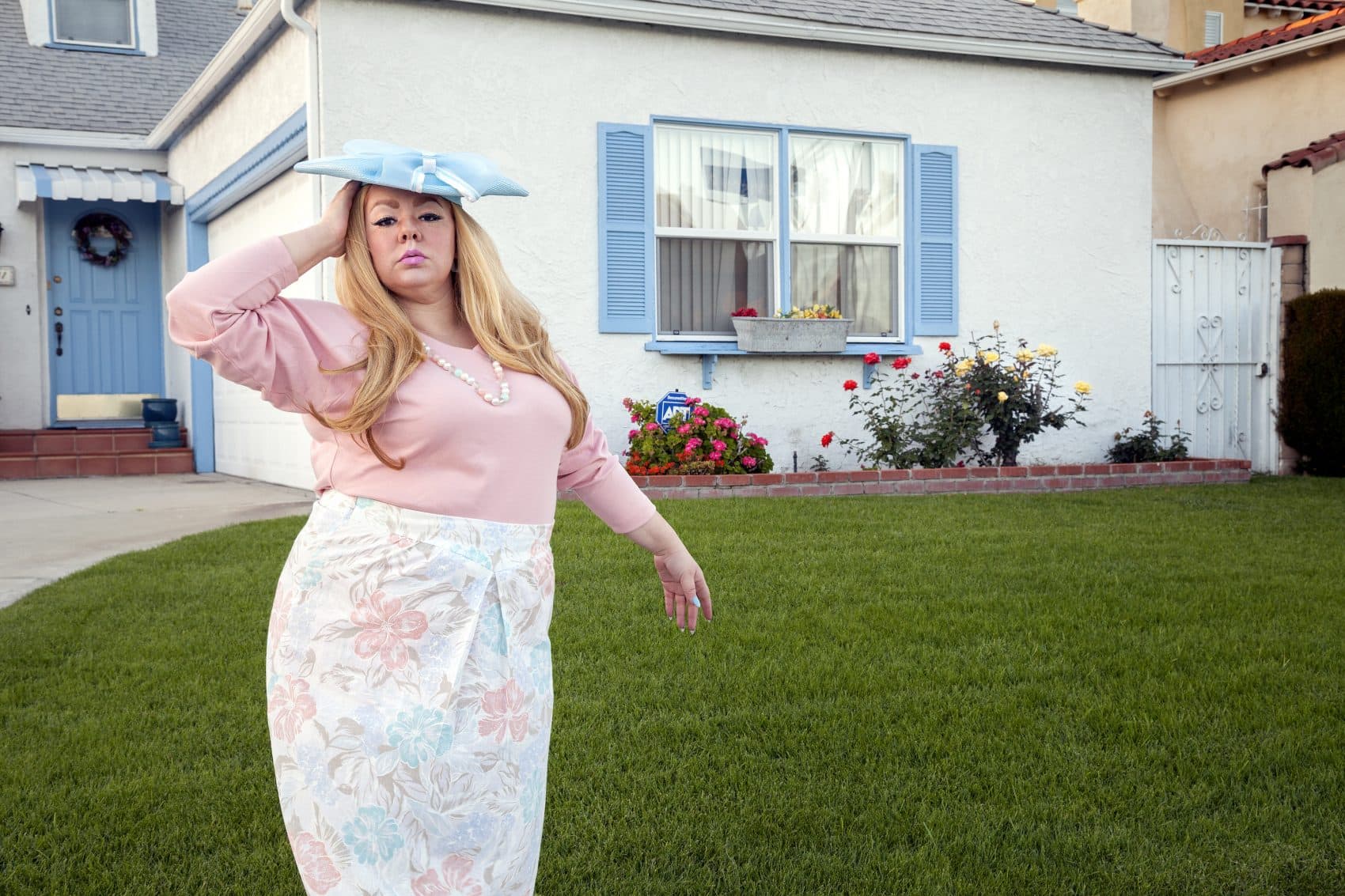
If there is one language that we all speak without necessarily understanding what we’re saying, it’s the language of fashion.
Going about our days with fabric draped either comfortably or uncomfortably around our bodies, whether we intend to or not, we’re saying a lot about who we are and who we aspire to be.
And that is exactly the takeaway of the new exhibit, “Forms & Alterations,” opening Saturday, Feb. 3, at Boston University’s 808 Gallery. The exhibit, on view until March 25, features the work of 13 artists and designers who explore the myriad ways in which clothing can be used to question, express and construct gender and identity. The artists and their concerns range radically in tone, interest and media, from Susan Metrican, who creates muscular works with cloth and paint that fuse painting and sculpture, to Qwear, a fashion collective showcasing fashion by and for the LGBTQ community. Qwear will kick off the exhibit Friday in an opening night fashion show being held at the gallery.
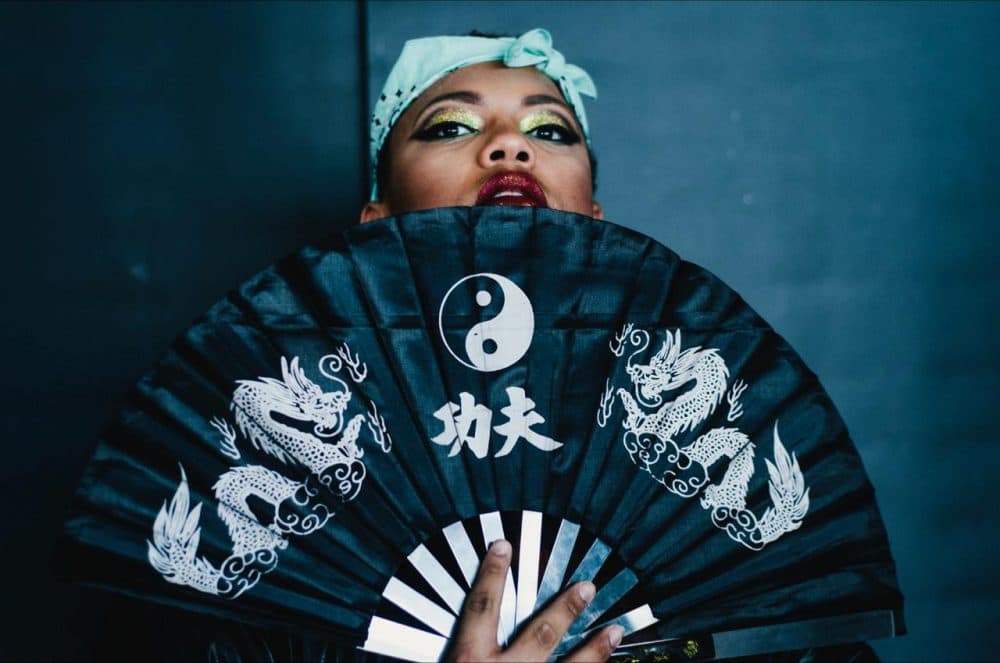
Curator Lynne Cooney, artistic director at the Boston University Art Galleries, says the show is a “snapshot,” not a survey, of artists who sometimes get left out of the more typical mainstream museum exhibits on fashion. This time around, Cooney was interested in assembling artists “working at the other end of the spectrum, not as clothing designers per se, but working with that language as a way to talk about other things — whether it be fashion’s commodity status, issues around gender, self-expression, self-styling.”
In other words, this is not an exhibit where you can expect to see the history of tie-dye fashion or hoop skirts or a room full of Alexander McQueen clothing, although it’s possible that you may indeed see tie-dye, hoop skirts and something akin to McQueen’s gender-bending creations.
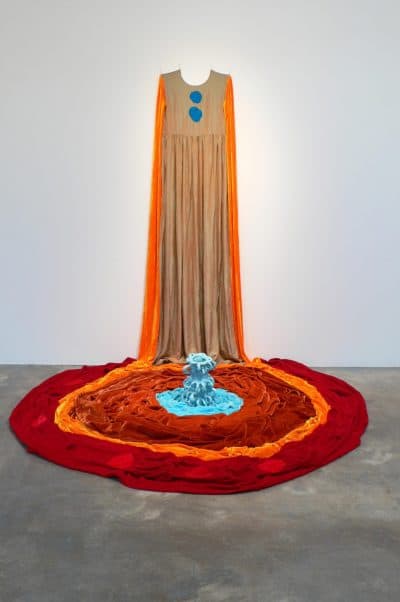
Aside from Metrican and Qwear, participating artists include Lisa Anne Auerbach, A.K. Burns, CarWash Collective (Beverly Semmes and Jennifer Minniti), Susan Cianciolo, Claire Fleury and Alesia Exum, Genevieve Gaignard, K8 Hardy, Katherine Hubbard and MPA, Beverly Semmes, Stacy A. Scibelli, Sarah Zapata and Andrea Zittel.
“These are artists working with fashion who are trying to critique the larger ideas,” says Cooney. “It’s not just about beautiful artisanship and design, and exquisite garments that are incredibly expensive and exist in an elitist realm. Most of the artists in this show don’t really know how to sew very well. There’s kind of a countercultural attitude in a lot of the art.”
The countercultural approach is certainly evident in the 40 or so works on view that span media, from clothing to photography to painting. For instance, New York artist Stacy Scibelli, who attended the Massachusetts College of Art and Design before moving to New York in 2004, will be exhibiting clothing she made as part of an “endurance performance” put on in 2013 entitled “Suit Yourself.” For 30 days, Scibelli made every stitch of clothing she wore, from undergarments to bathing suits to everyday clothing.
“No garment was to be repeated and I wore no objects that were not produced in my home, other than shoes,” says Scibelli. Each day, she would sew up her outfit for the next.
“I was interested in stretching the boundaries on the traditional structure of clothing and how it interacts with our bodies.”
She was also interested, she says, in elevating clothing into the status of “revered object” through the removal of function, while also “attending to aesthetics and ideas of the body talisman and the power that we inherit and mine from these objects.” (She recounts her experience in her blog.)

On a personal level, Scibelli says her performance “forced me to be simultaneously less precious and more aware of my interactions with cloth, sewing and garments. It also broke my dependence on traditional forms used in garment design and freed me to explore design in a much more open space.”
Artist Susan Metrican is known for her sculptural works stretching large pieces of canvas directly to the wall, painting and sanding them, then cutting up, sewing and reassembling them. In “Forms & Alterations,” she will show a piece comprised of three pairs of jeans draped on a wall in a way that could almost suggest kitchen or theater curtains.
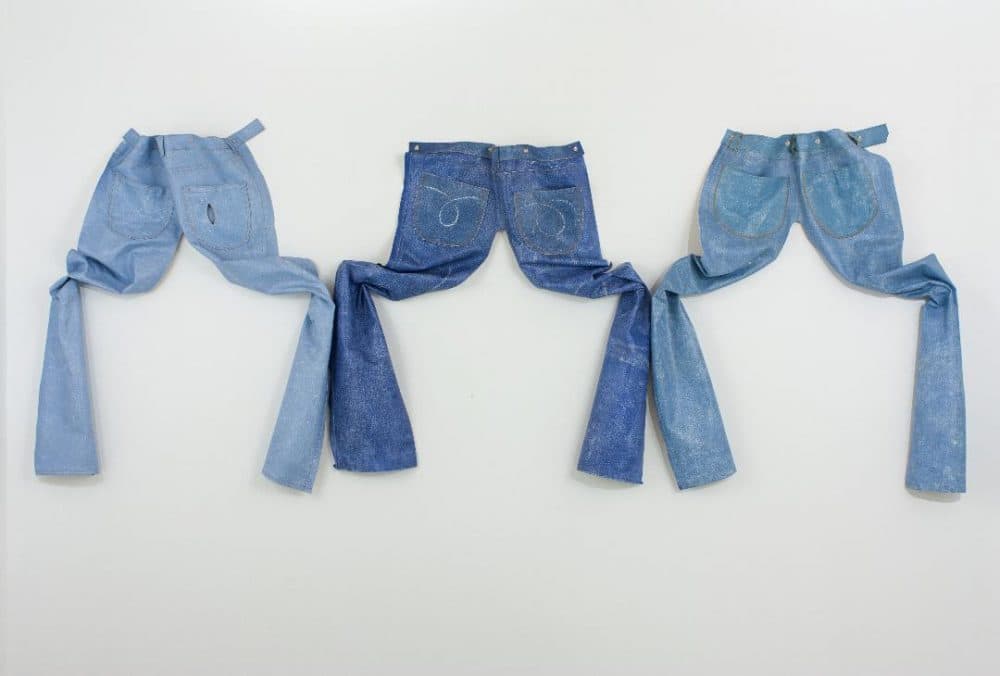
“I was thinking at the time about the filmic image of three cowboys riding off into the sunset,” says Metrican, who is also curator and director of the arts at the Women’s Studies Research Center at Brandeis University. At the same time, she says, she wanted to reference high-waisted women's jeans from the 1970s.
“The gesture implied by the jeans indicates squatting, dancing or riding without a horse,” she adds.
Intentional or not, each of these actions, it could be noted, also often comes with gender associations.
In Friday’s opening fashion show, Qwear will “showcase LGBTQIA modes of expression,” according to founder Sonny Oram, who lives in Boston with partner Rupi, Qwear’s fashion director and designer.
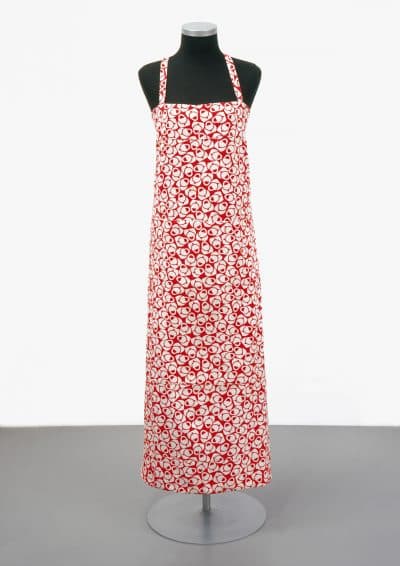
Qwear will show nine different outfits in a performance in which queer and transgender models will interact with the audience. Each piece will be a collaboration between Rupi and the model wearing the outfit. Models will be all shapes, sizes and colors, and will include queer and transgender youth who have passed through the Y2Y homeless shelter in Harvard Square, a collaborator on the show. The show marks Qwear’s third apparel collection. Previous Qwear collections have premiered at Queer Fashion Week in Oakland and the Institute of Contemporary Art here in Boston. In every instance, the models were chosen first and the clothing custom designed around the models.
“The idea is to give LGBTQ people back our autonomy when it comes to fashion,” says Oram. “We are fighting against the fashion industry’s idea that you need to make a size 0 outfit and then find a model to fit that.”
In the end, Oram says Qwear’s mission is to “uplift representation of people of color, transpeople and people of size… People should come first and the fashion follows.”
Whatever their medium or message, the artists on view in “Forms & Alterations” are looking to unravel a bit of the stitching around the meaning and language of fashion.
“Forms & Alterations” shows through March 25 at Boston University’s 808 Gallery, with an opening reception Feb. 2 and a fashion performance by Qwear.
